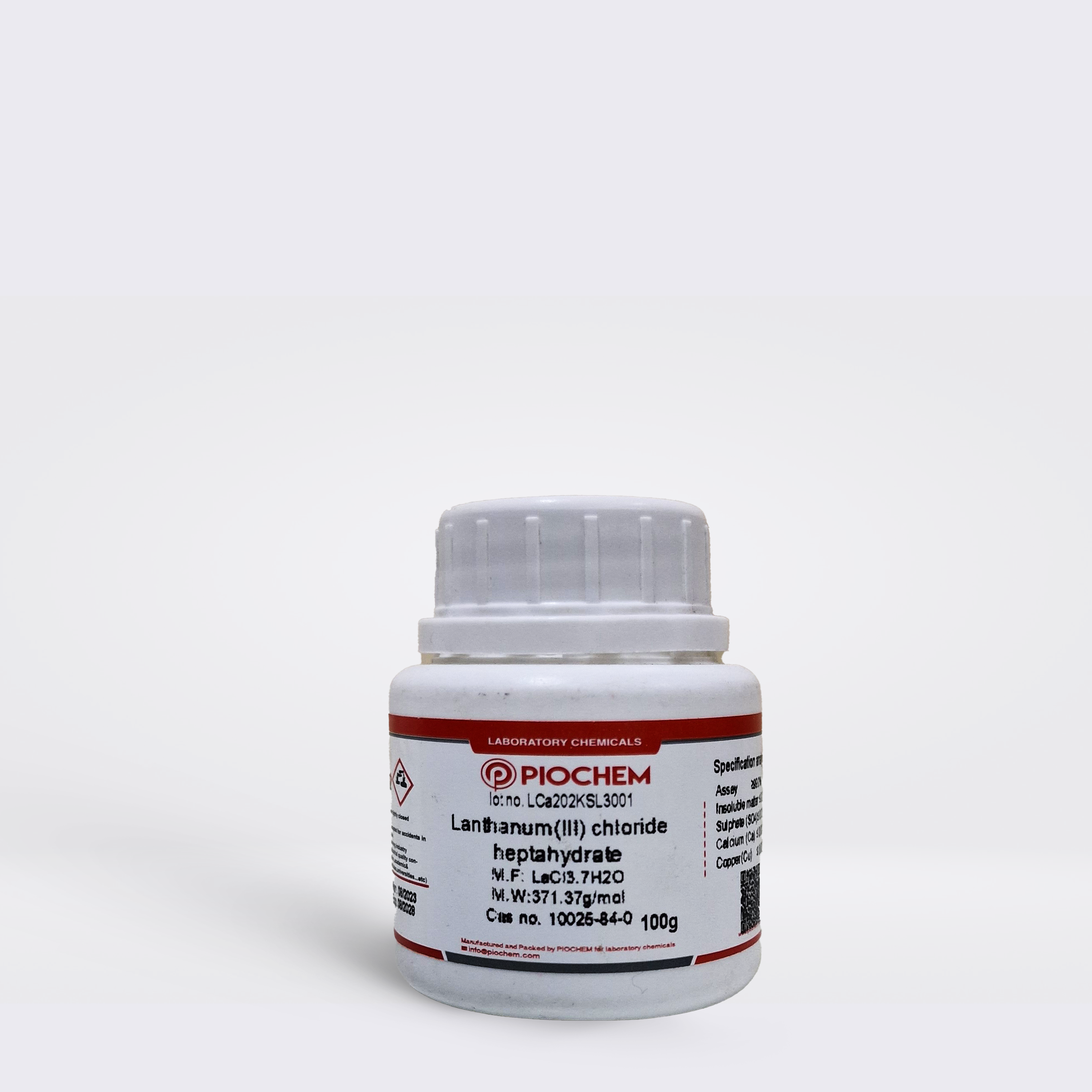lanthanum chloride heptahydrate is used in a variety of applications, including:
- Luminescent materials: Lanthanum chloride heptahydrate is used to make luminescent materials, such as phosphors. Phosphors are materials that emit light when they are exposed to radiation. Lanthanum chloride heptahydrate is used in phosphors because it can emit a variety of colors of light.
- Catalysts: Lanthanum chloride heptahydrate is used as a catalyst in a variety of reactions, such as the production of plastics and pharmaceuticals. Catalysts are substances that speed up chemical reactions without being consumed in the reaction.
- Optical materials: Lanthanum chloride heptahydrate is used in optical materials, such as lenses and lasers. Optical materials are materials that transmit or reflect light. Lanthanum chloride heptahydrate is used in optical materials because it has a high refractive index, which means that it bends light more than other materials.
- Other applications: Lanthanum chloride heptahydrate is also used in a variety of other applications, such as in the production of batteries and ceramics.
Lanthanum chloride heptahydrate is a safe compound when handled properly. However, it can be harmful if ingested or inhaled. It is important to wear gloves and eye protection when handling lanthanum chloride heptahydrate.
Here are some safety precautions to take when handling lanthanum chloride heptahydrate:
- Wear gloves and eye protection when handling lanthanum chloride heptahydrate.
- Avoid breathing in dust or mist from lanthanum chloride heptahydrate.
- If lanthanum chloride heptahydrate gets on your skin, wash it off immediately with soap and water.
- If lanthanum chloride heptahydrate gets in your eyes, flush them with water for at least 15 minutes and seek medical attention immediately.
- Keep lanthanum chloride heptahydrate out of reach of children and pets.





Reviews
There are no reviews yet.